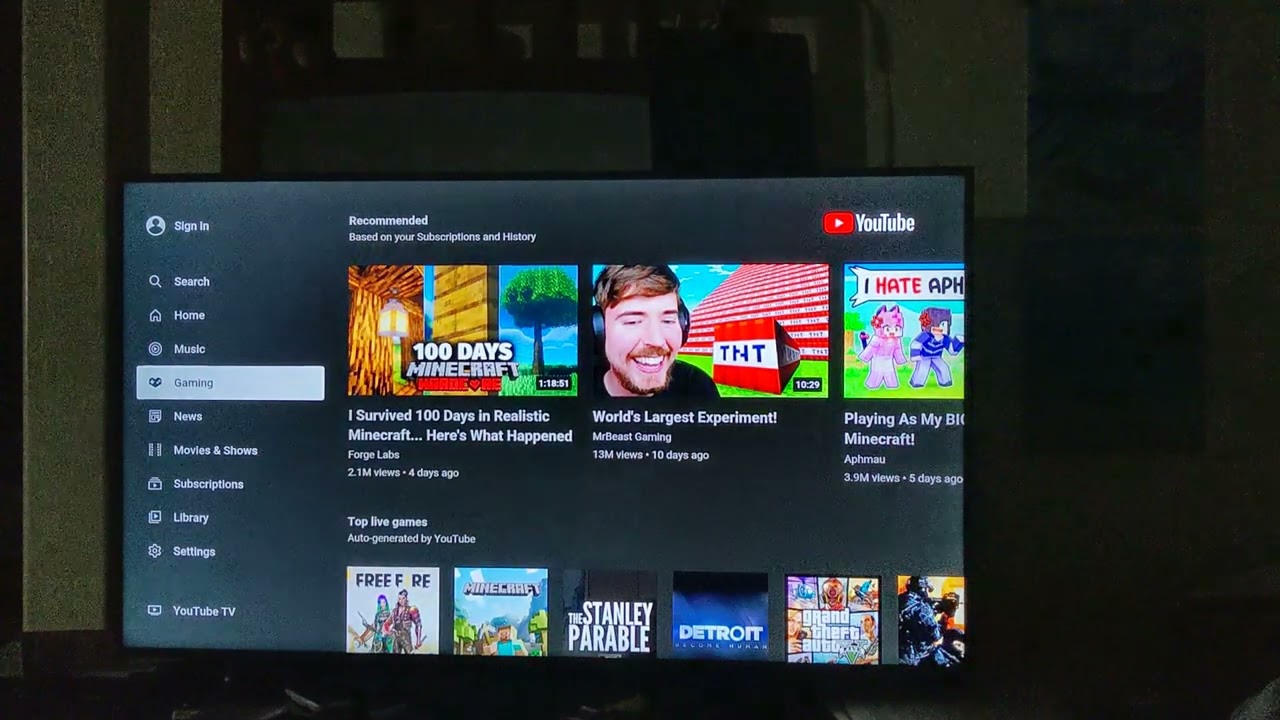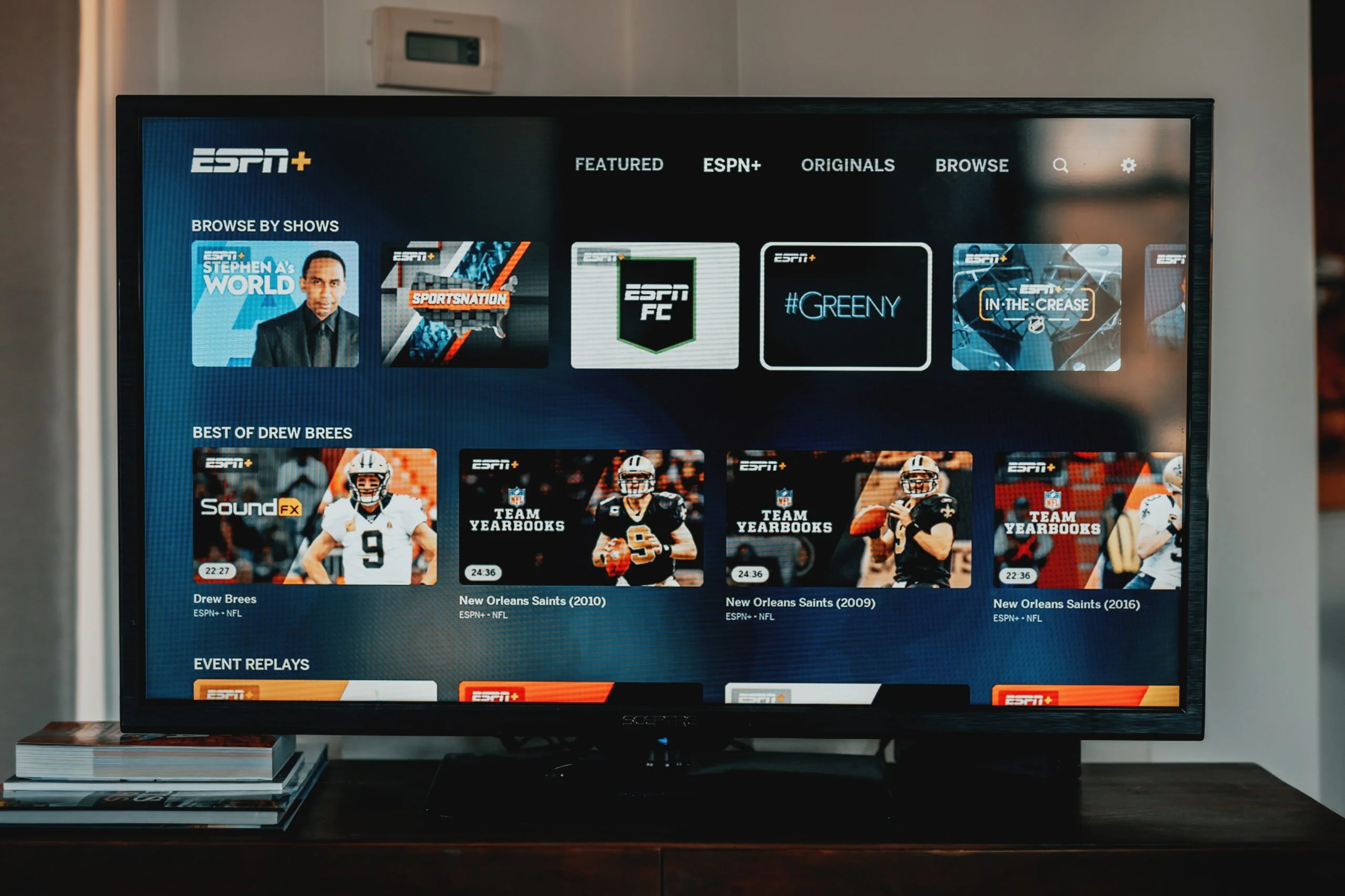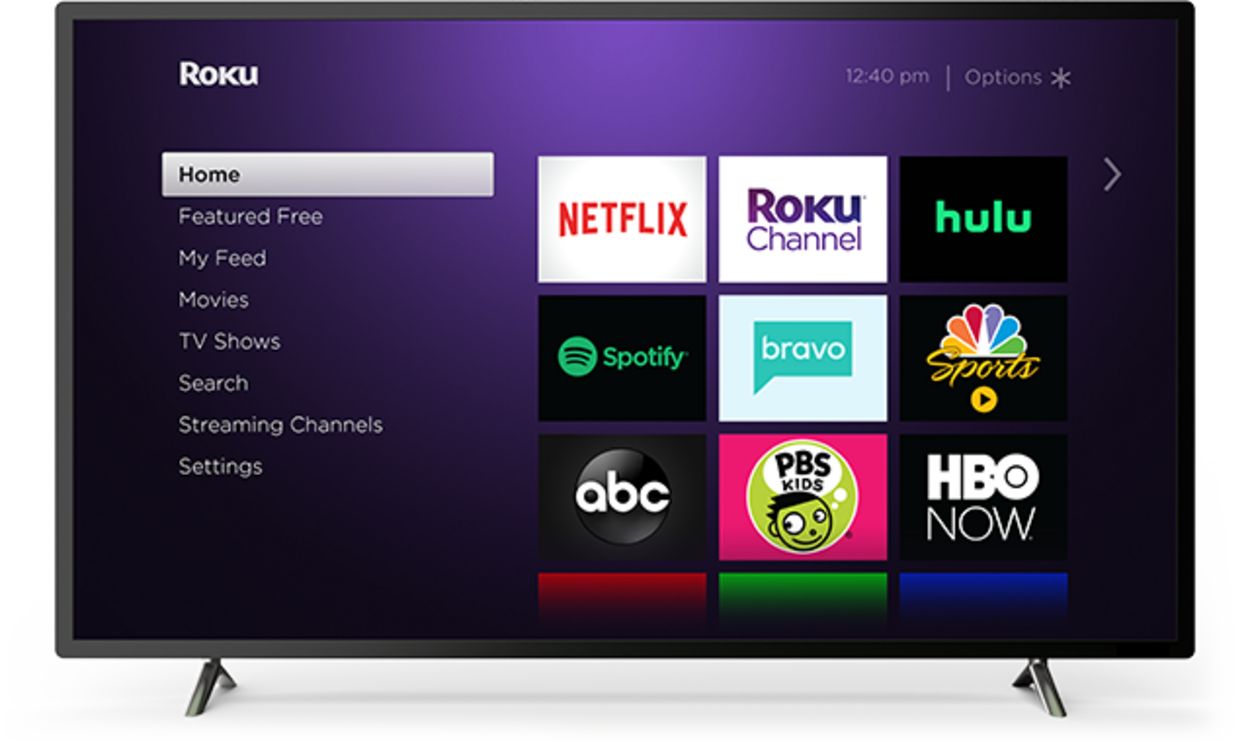Introduction
Welcome to the world of smart TVs! With the rapid advancement of technology, televisions have evolved from simple devices that display broadcasted channels to intelligent multimedia hubs. Smart TVs have become an integral part of many households, offering a wide range of features such as streaming services, internet browsing, and app functionality.
As these smart TVs become more advanced, they also consume larger amounts of data to deliver the high-quality content we love to watch. It’s important for users to have a clear understanding of how much data their smart TV uses per month and what factors can influence that usage.
In this article, we will explore the data consumption of smart TVs and provide insights into the factors that affect it. We will also discuss popular streaming services and their data usage, as well as provide some tips on how to optimize and conserve data usage on your smart TV.
So, whether you have just purchased a new smart TV or are looking to manage your data usage more efficiently, this guide will help you make informed decisions and ensure you get the most out of your smart TV experience!
What is a Smart TV?
A smart TV is a television that goes beyond traditional broadcasting capabilities by integrating internet connectivity and multimedia features. It is essentially a combination of a television and a computer, allowing users to access a wide range of online content, streaming services, apps, and interactive features.
Smart TVs have built-in Wi-Fi capabilities or Ethernet ports that enable them to connect to the internet seamlessly. This connectivity provides access to various online platforms, such as streaming services like Netflix, Hulu, and Amazon Prime Video, social media apps, web browsers, and even video conferencing applications.
Unlike regular televisions, smart TVs often come equipped with internal storage or USB ports, allowing users to store and play media files directly on the device. Additionally, they may have HDMI ports to connect other devices like gaming consoles, Blu-ray players, or soundbars.
The user interface of a smart TV is designed to be intuitive and user-friendly, employing navigation menus, app stores, and voice recognition technology for easy access to content and settings. Many smart TVs also support screen mirroring, which enables users to display their smartphone or tablet screens on the TV for convenient sharing.
Overall, a smart TV offers a vast array of entertainment options and transforms the television viewing experience into a more interactive and personalized one. With the ability to access on-demand content and connect to various online services, smart TVs have revolutionized the way we consume media in our homes.
How does a Smart TV consume data?
A smart TV consumes data in various ways to deliver the content and features it offers. Here are the main ways in which a smart TV consumes data:
- Streaming services: One of the primary functions of a smart TV is to stream online content. When you watch movies, TV shows, or videos from streaming services like Netflix, YouTube, or Hulu, your smart TV uses data to download and display the content in real-time. The amount of data consumed depends on the quality of the video being streamed. Higher resolutions like 4K and HDR require more data compared to standard definition or HD video.
- App updates and downloads: Smart TVs offer a wide range of apps that can be downloaded and installed. These apps, whether they are streaming services, games, or utility apps, often require data to update and download new content or features. The size of the app and the frequency of updates determine the amount of data consumed in this process.
- Web browsing: Smart TVs with web browsing capabilities allow users to access websites directly from their televisions. Browsing the internet consumes data, similar to how it does on a computer or smartphone. The more you surf the web, stream media, or view image-heavy websites, the more data your smart TV will consume.
- Interactive features: Smart TVs often come with interactive features like voice control, screen mirroring, and social media applications. These features require an internet connection to function properly and can consume data as you interact with them. For example, streaming music or videos from online platforms, using voice search, or engaging in video chats will utilize data.
It’s important to note that the data consumption of a smart TV can vary significantly depending on the type of content being accessed and the settings applied. Streaming higher quality videos, frequently using data-intensive apps, or leaving the TV connected to the internet for automatic updates can result in higher data consumption.
Understanding how your smart TV consumes data is crucial for managing your internet usage effectively and avoiding any surprises on your monthly data cap. By being aware of the various ways your smart TV consumes data, you can take steps to optimize and control your data usage to ensure a smooth and uninterrupted viewing experience.
Factors that affect data usage on a Smart TV
Data usage on a smart TV can be influenced by several factors. Understanding these factors can help you make informed decisions about your data consumption and make adjustments accordingly. Here are the main factors that affect data usage on a smart TV:
- Streaming quality: The quality at which you stream content plays a significant role in data consumption. Higher resolutions, such as 4K Ultra HD or HDR, require more data compared to standard definition (SD) or high definition (HD) streams. Adjusting the streaming quality based on your internet speed and data availability can help control data usage.
- Length of streaming: The duration for which you stream content directly affects the amount of data consumed. The more time you spend streaming movies, TV shows, or videos, the more data your smart TV will use. To conserve data, consider limiting your streaming time or choosing shorter content options.
- Number of connected devices: If you have multiple devices connected to the internet simultaneously, including smartphones, tablets, laptops, and other smart TVs, the overall data consumption can increase significantly. Each device consumes data for its individual activities, including streaming, downloads, and updates. Keeping track of all connected devices and managing their data usage can help control overall data consumption.
- Automatic updates: Smart TVs often come with automatic update features enabled by default. These updates can include firmware updates, app updates, and security patches. While important for maintaining the functionality and security of your smart TV, these updates can consume a significant amount of data. Consider adjusting the settings to schedule updates during non-peak hours or manually initiating updates to have more control over when data is being used.
- Background processes and apps: Some smart TVs may have background processes or apps running even when you’re not actively using them. These processes can consume data behind the scenes, such as syncing content, downloading recommendations, or fetching updates. Reviewing and controlling the background processes and apps on your smart TV can help reduce unnecessary data consumption.
- Internet speed: The speed of your internet connection can impact data usage on your smart TV. If you have a slower internet connection, the streaming quality may automatically adjust to a lower resolution, resulting in lower data consumption. Conversely, if you have a high-speed internet connection, the streaming quality may default to a higher resolution, consuming more data. Understanding your internet speed and adjusting the streaming quality accordingly can help optimize data usage.
By considering these factors and being mindful of your data usage, you can effectively manage your smart TV’s data consumption and avoid unexpected data overages. Monitoring and controlling your data usage ensures that you have a seamless streaming experience while staying within your internet data limits.
Streaming services and their data usage on a Smart TV
Streaming services have become immensely popular, offering a vast library of movies, TV shows, and other content that can be accessed on-demand through your smart TV. While these services provide great entertainment options, it’s important to be aware of their data usage to effectively manage your internet consumption. Here are some popular streaming services and their data usage on a smart TV:
- Netflix: Netflix offers a wide range of streaming options and content in various resolutions. The data usage on Netflix depends on the streaming quality. For instance, streaming in SD can consume around 0.7 GB per hour, while streaming in HD can use approximately 3 GB per hour. If you have a 4K Ultra HD plan, streaming in that resolution can consume around 7 GB per hour.
- Hulu: Hulu also provides a range of streaming options, including standard definition and high definition content. Streaming in SD consumes approximately 0.6 GB per hour, while HD streaming uses around 3 GB per hour. Hulu also offers a premium streaming option called Hulu + Live TV, which can have higher data consumption due to live streaming channels.
- Amazon Prime Video: Amazon Prime Video offers a variety of content, including movies, TV shows, and original programming. The data usage on Prime Video depends on the selected streaming quality. Streaming in SD consumes around 0.46 GB per hour, while HD streaming uses approximately 2.8 GB per hour. If you opt for 4K Ultra HD streaming, the data usage can go up to 6 GB per hour.
- Disney+: Disney+ is a popular streaming service for Disney, Pixar, Marvel, Star Wars, and National Geographic content. The data consumption on Disney+ varies with the streaming quality. Streaming in SD consumes around 0.7 GB per hour, while streaming in HD can consume approximately 3 GB per hour. 4K Ultra HD streaming on Disney+ can consume around 7 GB per hour.
- YouTube: YouTube offers a wide range of user-generated and professional content, including music videos, tutorials, vlogs, and more. The data usage on YouTube depends on the selected video quality. Lower resolution videos, such as 480p, can consume around 0.3 GB per hour, while higher resolution videos, such as 1080p or 4K, can use significantly more data.
It’s important to note that the data usage mentioned for these streaming services is approximate and can vary based on several factors, including the content being streamed, compression techniques used, and the efficiency of the streaming service’s algorithms.
To optimize data usage on your smart TV, consider adjusting the streaming quality of these services based on your internet speed and data availability. Most streaming platforms allow you to manually select the desired streaming quality in their settings. By choosing a lower resolution when applicable, you can significantly reduce data consumption without compromising the overall viewing experience.
Understanding the data usage of different streaming services on your smart TV can help you make informed decisions about how to allocate your internet data and prevent exceeding your data limits. By choosing the streaming quality that best suits your needs and monitoring your data usage, you can enjoy your favorite content while managing your internet consumption effectively.
How to optimize data usage on your Smart TV
Managing data usage on your smart TV is crucial to prevent exceeding your internet data limits and to ensure a smooth streaming experience. Here are some tips to help you optimize data usage on your smart TV:
- Monitor data usage: Start by monitoring your smart TV’s data usage to understand how much data it consumes for different activities. Check your internet service provider’s data usage tracking tool or use third-party apps that monitor data consumption on individual devices. This will give you insights into which activities and streaming services are using the most data.
- Adjust streaming quality: Many streaming services and smart TVs offer options to adjust the streaming quality manually. Selecting a lower resolution, such as standard definition (SD) or high definition (HD) instead of 4K Ultra HD, can significantly reduce data usage without a significant impact on viewing quality, especially for smaller screens.
- Limit background processes: Background processes and apps on your smart TV can consume data without your knowledge. Disable unnecessary background processes and limit the number of apps running in the background to minimize data usage. Check your smart TV’s settings to manage background activities effectively.
- Disable autoplay: Autoplay features on streaming services can result in consecutive episodes or videos playing automatically, using up more data than necessary. Disable autoplay in the settings of your preferred streaming service to have more control over what you watch and when.
- Download content for offline viewing: Where supported, consider downloading movies, TV shows, or videos to your smart TV for offline viewing. This allows you to enjoy your favorite content without using any additional data when you are not connected to the internet.
- Limit streaming time: Set a limit on the amount of time you spend streaming on your smart TV. By reducing your streaming time, you can effectively lower your data consumption. Consider watching shorter content or creating a schedule to help you manage and prioritize your streaming activities.
- Use data-saving features: Some smart TVs and streaming services offer data-saving features that optimize the streaming experience while reducing data consumption. Explore your smart TV’s settings or the settings within your streaming apps to see if there are any specific options to save data available.
- Keep software up to date: keeping your smart TV and streaming apps up to date ensures that you have the latest features, bug fixes, and improvements. Updated software can sometimes optimize data usage and improve overall efficiency.
By implementing these optimization techniques, you can take control of your smart TV’s data usage and ensure that your streaming activities align with your available internet data. These tips will help you manage data consumption effectively, prevent exceeding data caps, and make the most of your streaming experience.
Tips for conserving data on a Smart TV
Conserving data on your smart TV not only helps you stay within your internet data limits but also ensures a smooth streaming experience without interruptions. Here are some valuable tips to help you conserve data on your smart TV:
- Limit streaming in high resolution: Streaming content in high resolutions like 4K Ultra HD can consume a significant amount of data. Consider watching content in lower resolutions, such as standard definition (SD) or high definition (HD), especially if you don’t have a fast or high data-cap internet connection.
- Set data usage alerts: Check if your smart TV or internet service provider offers data usage alerts or notifications. This way, you can track your data consumption and get warnings when you are approaching your data limit, helping you be more mindful of your usage.
- Optimize streaming settings: Many streaming services and smart TVs allow you to adjust settings that optimize data usage. Look for options to reduce streaming buffer times or select lower bitrates to minimize data consumption without compromising too much on video quality.
- Clear cache and disable automatic video previews: Clearing the cache of your streaming apps can help reduce data usage by removing unnecessary downloaded files. Additionally, disabling automatic video previews or trailers can prevent data-consuming playbacks when browsing content.
- Prefer Wi-Fi over mobile hotspot: If you are using a mobile hotspot to connect your smart TV to the internet, be mindful of the data limits associated with your mobile data plan. Whenever possible, connect your smart TV to a reliable Wi-Fi network with a broader data cap or unlimited data to avoid unexpected overage charges.
- Download updates during off-peak hours: If your smart TV allows manual updates, schedule them during off-peak hours, such as nighttime or early morning when data usage is typically lower. This way, you can make the most of your available data without interfering with your streaming activities.
- Close unused apps: When you are done using an app, be sure to close it completely rather than leaving it running in the background. This prevents unnecessary data usage as some apps may continue to consume data even when not in use.
- Use an ad blocker: Certain smart TVs support ad-blocking software or apps. By using an ad blocker, you can reduce data consumption caused by ad-heavy websites or streaming platforms that rely on data-consuming advertisements.
- Limit screen mirroring: Screen mirroring your smartphone, tablet, or other devices on your smart TV can result in data consumption, especially if you are streaming content from the mirrored device. Minimize screen mirroring to conserve data and consider streaming content directly on the smart TV instead.
By implementing these tips, you can manage and conserve data on your smart TV effectively. Whether it’s adjusting streaming settings, being mindful of your internet connection, or optimizing various features, following these tips will help you make the most of your data allocation while experiencing a seamless streaming experience.
Conclusion
Smart TVs have revolutionized the way we consume media in our homes, offering a wide range of features and entertainment options. However, it’s important to be mindful of data usage to avoid exceeding data caps and ensure a smooth streaming experience. By understanding how a smart TV consumes data and implementing optimization strategies, you can make the most of your internet data while enjoying your favorite content.
Factors such as streaming quality, streaming duration, connected devices, and automatic updates can significantly impact data usage on your smart TV. Adjusting streaming quality, limiting background processes, and monitoring data consumption can help optimize data usage.
When using popular streaming services, be aware of their data consumption rates and select the appropriate streaming quality based on your internet speed and data availability. Additionally, consider downloading content for offline viewing and disabling autoplay features to conserve data.
To further conserve data, set data usage alerts, optimize streaming settings, clear cache, and disable unused apps. Prefer Wi-Fi over mobile hotspots, schedule updates during off-peak hours, and use ad blockers when applicable. These tips will help you manage and conserve data on your smart TV effectively.
By taking these steps, you can have a seamless streaming experience while staying within your data limits and avoiding unexpected overage charges. Enjoy your smart TV to the fullest, knowing that you are in control of your data consumption and maximizing your entertainment potential.

























